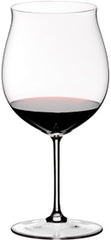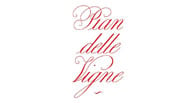Awards

Perfume

Color

Taste
Serve at:
18 - 20 °C.
Longevity:
10 - 15 years
Decanting time:
1 hour

- Start up year: 1995
- Oenologist: Dora Pacciani
- Bottles produced: 156.000
- Hectares: 65
The total surface area of the Pian delle Vigne estate is 184 hectares (470 acres), 65 of which (over 160 acres) are planted to vines; there are 2 hectares (5 acres) of olive groves and 117 hectares of woods. Read more


| Name | Pian delle Vigne Brunello di Montalcino Vignaferrovia Riserva 2018 |
|---|---|
| Type | Red still |
| Denomination | Brunello di Montalcino DOCG |
| Vintage | 2018 |
| Size | 0,75 l |
| Alcohol content | 14.5% by volume |
| Grape varieties | 100% Sangiovese |
| Country | Italy |
| Region | Tuscany |
| Vendor | Pian delle Vigne (Antinori) |
| Story | The Pian delle Vigne estate is located 3.5 miles (6 kilometers) to the South of the town of Montalcino above the Orcia river valley. The estate takes its name from a typical 19th century railroad station located within the confines of the property. The estate consists of 460 acres (184 hectares) of land, 160 of which (some 65 hectares) are planted to vines situated between 130 and 200 meters (440-660 feet) above sea level and with an exposure which is principally Southwest. The soil consists prevalently of clay and limestone and is rich in small stones. The estate’s Brunello di Montalcino is produced exclusively from Sangiovese grapes (the variety is known by the name Brunello in Montalcino) according to the regulations of an appellation whose most significant points are: production zone – township of Montalcino; maximum yield in the vineyard – 7 tons per hectare; yield in wine from the grapes – a maximum of 68%; obligatory wood ageing for the wines – 2 years; obligatory bottle ageing for the wines – minimum 4 months (6 months for the Riserva); minimum alcohol level – 12.5°; commercial release – no sooner than the 1st of January of the 5th year after the harvest (the 6th year in the case of the Riserva). |
| Origin | Montecalcino (SI). |
| Wine making | A careful and precise selection of the grapes, carried out under favourable climatic conditions in the vineyard, proceeded in 2 distinct phases: the first, the so-called “green harvest”, took place in early July, while the second was carried out in early September, shortly before the beginning of the harvest. This assisted in bringing only the finest grapes to the cellar. After a soft destemming and pressing, the must remained in contact with the grape skins for approximately 3 weeks, during which time soft extraction techniques, which fully respected the quality of the grapes, were utilized. |
| Aging | The fermentation was followed by a period of oak aging which lasted approximately 2 and a half years, beginning, during the initial phase, in small (130 gallon) oak barrels and then moving gradually towards larger 3,000 liter (800 gallon) casks for the later phases of the ageing process. |
| Allergens | Contains sulphites |







